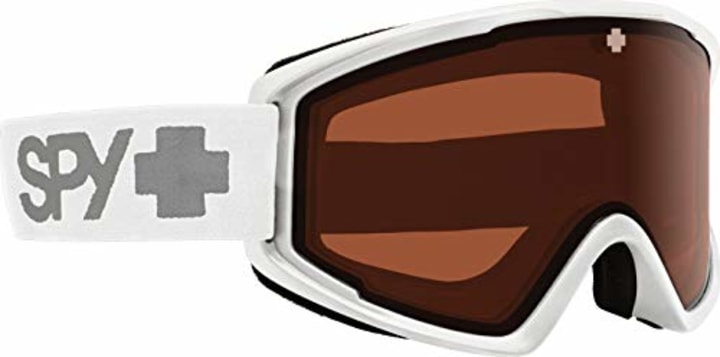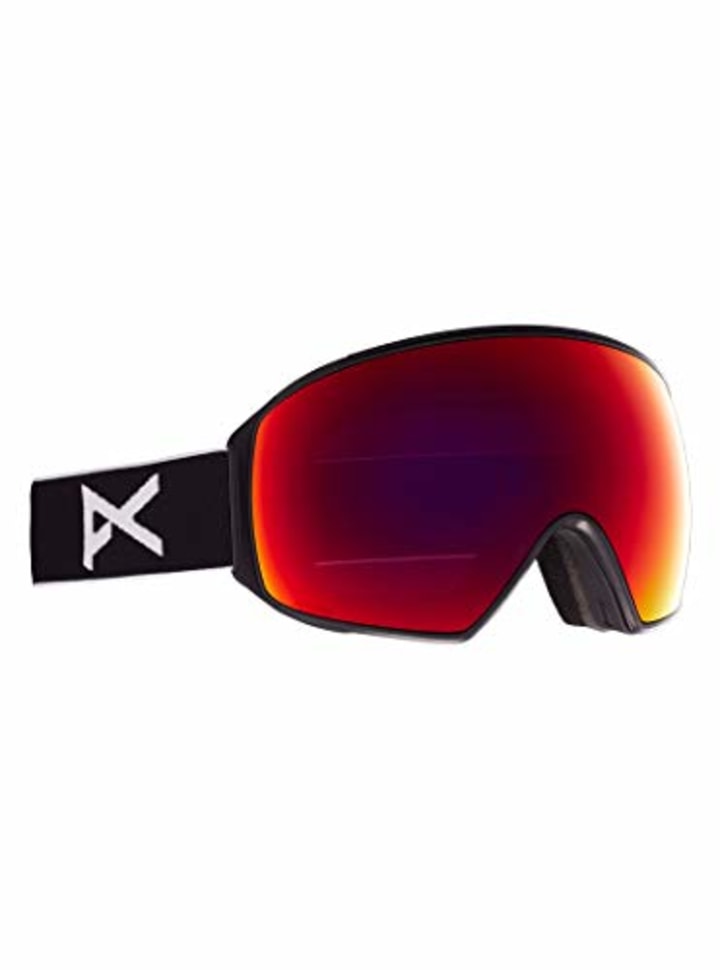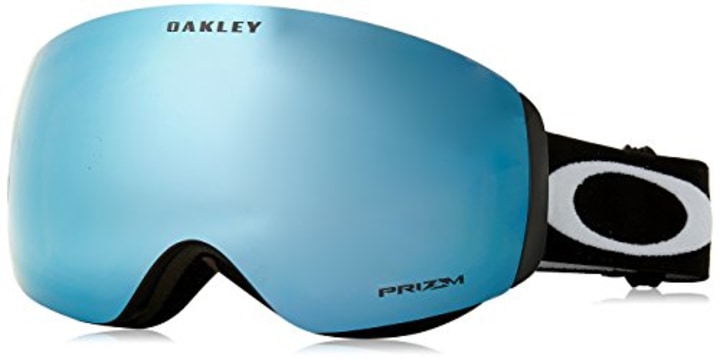Funny Snow Advertisements Goggle Ski Mountain
Ski goggles for any skier
Ski goggles aren't just for speedy skiing, though: Other benefits include protection from the elements, especially when the temperature dips or it's actively snowing, explained Rob Frei, current resort retail manager for Killington Resort and Pico Mountain. "You will have a much better experience if your eyes are protected and kept warm and dry," he said. "Goggles are a way to protect your eyes and enhance your optical clarity, which will help you to see better and enhance your experience on the hill."
Randall added that sun protection also makes goggles must-haves before heading out. "For sunny days, you need protection both from the sun itself and the reflection of the sun off the snow, which most people don't think about," she said. "When you're hurtling down the slopes, having accurate vision to navigate the terrain, obstacles and other people is essential." "
Best ski goggles
If you're ready to shop for a new pair of ski goggles before your next winter sports adventure, we put together some of the best ski goggles around right now, according to the expert guidance we got.
Best ski goggles overall: Rudy Project
1. Rudy Project Klonyx Snow
Randall's overall favorite goggle is the Rudy Project Klonyx Snow, which comes with an anti-fog double lens as well as a removable optical insert. "They fit my face so well I forget I'm wearing them half the time," she said.
"They also have multiple options for lenses and it's easy to change the lenses in and out." Randall also appreciates how well they fit with her helmet and the optional nose guard "that can be helpful on really cold days."

Best affordable ski goggles: OutdoorMaster
2. OutdoorMaster OTG Ski Goggles
Available in 19 different colorways, these budget-friendly goggles are a popular pick on Amazon and fit adults as well as youth. The anti-fog lenses offer 100-percent UV protection to keep your vision clear and eyes safe while out on the slopes.
With a long strap to fit over different helmets, these goggles are compatible with most models and can also be worn comfortably over glasses. Plus, they come with a one-year warranty and a carrying pouch to keep them safe.

Best ski goggles for beginners: Spy
3. Crusher Elite Snow Goggle
If you're just starting out and not ready to make a major gear investment, check out Spy's Crusher Elite Snow Goggles. There's one flexible polyurethane lens that offers anti-fog, anti-scratch and 100-percent UV protection as well as triple-layer foam for comfort. Randall added that when it comes to shopping for beginners, it's all about finding a price point that you're comfortable with and then finding the proper fit that depends on the individual.
"Once you get into the sport more, you can always upgrade to higher quality lenses," she said.

Best high-end ski goggles: Anon
4. Anon M4 Toric Snow Goggles
These unisex goggles fit medium to large faces and are Frei's top pick for those looking to invest in a pair of high-end goggles due to their innovative magnet design.
"The Anon M4 goggles come with two lenses held in by magnets and a magnetic face mask," he explained. This allows wearers the ability to seamlessly swap anti-fog lenses depending on weather condition while enjoying a secure magnetic lens-to-frame seal against the elements.

Best ski goggles for smaller faces: Oakley
5. Oakley Flight Deck XM Snow Goggles
Oakley is a "powerhouse" in the eyewear business, according to Frei, and is best known for their PRIZM lens. "These come in a multitude of tints and are high-contrast in all conditions, which makes the lenses very versatile," he said.
"The Flight Deck XM is a great goggle for a smaller face size, especially women, and has a PRIZM lens, three-layer foam and the fit, as well as finish, are second to none."

Ski goggles versus snowboard goggles
When starting your search, you may wonder if you should shop for specific goggles depending on the type of winter sport you'll be using them for. However, there isn't much of a difference between ski goggles, snowboard goggles and snowmobile goggles, aside from a slight difference in style and aesthetic, according to Randall.
"But performance-wise, I think they all work the same," she said. "Some goggles may be made to work better with certain helmets and it seems like many snowboarders gravitate toward certain helmet styles."
She also noted that you can use your goggles for other things too, like snow biking in the winter, which professional snowboarder Chris Rasman agreed with. "Some brands just do it better. Other than snowboarding, I would use my goggles if I'm sanding something, or even cutting onions," he noted. "They work well for any type of eye protection, really."
How to shop for ski goggles
"Find a pair that excites you — whether it's the right lens, a cool brand or something you saw your favorite athlete wear, feeling good about what you're wearing will incentivize you to wear your goggles," Randall said. "I also find that when I put my goggles on, it makes me a more confident skier. Knowing that I don't have to worry about my vision allows me to focus on getting the most out of each turn and really enjoying the ski day."
Fit matters: how to find the right ski goggles fit
First and foremost, the goggles should feel comfortable on your face. You'll also want to make sure that the strap can tighten around your head or helmet enough so that, if you shake your head around, the goggles don't move much.
"Taking the time to think about the size and shape of your face, and then comparing to the different options of goggle sizes and dimensions is worth the effort," said Randall. "If you get goggles [that are] too big, you may experience gaps that let light in (and snow and wind) on the sides."
According to Randall, a good fit will make the goggles perform best and ideally be so comfortable, you forget you're even wearing them. "I have a smaller face so I look for goggles that aren't super wide and have a medium vertical depth so that the main part of the lens sits just above my nose," she said. If the nose piece also feels like it's in your range of vision, that's also a sign the goggles are too big.
"In contrast, if the goggles feel like they are squeezing your nose (and making you talk funny) or you can see the sides of the foam padding in your range of vision, then the googles are likely too small," she added.
Randall recommended also taking your helmet into consideration while shopping online. "I've learned that not all goggles match up with all helmets. So taking into consideration the width and height of the front part of the helmet, where it meets your forehead, and comparing that to the goggle specs, will help you match the right fit," she said. "Picking goggles and helmets from the same manufacturer also help make the fit right." Otherwise, the experts we consulted highlighted some features you'll want to take into consideration before making your purchase.
What's your ski goggles budget?
You can find goggles ranging from $40 to $400 depending on features, according to Frei — it just depends on how much you want to or can invest.
Foam
Be aware of the foam that sits against your face. "The higher-end goggles use a 'triple layer' of foam which conforms to your facial features better and offers a softer feel against the skin," he said. "These goggles also last longer as the foam takes longer to break down."
The goggles' face fit
Does the frame fit nicely on your face? "You want to avoid major gaps between your skin and the foam and ensure there are no pressure points hurting your cheek or nose," said Rasman.
The helmet fit
You also want to ensure your goggle frame fits well with the helmet you are wearing and that the goggles still sit on your face well when that helmet is on. "The top of the goggle frame should fit relatively flush with the helmet, and the strap should be able to go over it easily, too," Rasman added.
The ski goggles lens
There are different lenses in various colors for different light conditions to help maximize vision on both low-light and sunny days — this feature is usually noted as the Visible Light Transmission. The lower the VLT percentage, the better it is for bright days. "Personally, I like a rose-colored lens as the most versatile," said Randall. "It is really helpful in flat light conditions, like snowy days, and can still block most of the sun on bright days."
According to Frei, the biggest innovation in goggles has been the "quick change" lens. This gives the consumer the ability to change from one tinted lens to another quickly and easily instead of needing to purchase multiple pairs of ski goggles.
"There are manufacturers such as Anon and Smith Optics that use magnets to hold the lens in the frame," he said. "This allows for an effortless lens change while ensuring the lens stays in place while you ride." If you have the option to swap lenses, Randall recommends grabbing three to cover most conditions
- A clear lens for night and super low light
- A rose lens for low or flat light or all-around
- A darker, polarized lens for super bright days.
"If you pick a pair of goggles with too dark or too light of a lens, then you won't get the optimal visual experience during your ski/board session," Randall added. "Getting a high quality lens can actually enhance your vision in snow conditions, which can be helpful for seeing terrain changes."
Ski goggles straps
Longer straps will offer a wider range of compatibility with different helmets. Straps on the nicer goggles also tend to be wider and have silicone strips on the inside to keep them in place against your helmet," Frei added.
Ski goggles ventilation system
Look for features that have some sort of air escape or exchange to keep your goggles from fogging.
Catch up on Select's in-depth coverage of personal finance, tech and tools, wellness and more, and follow us on Facebook, Instagram and Twitter to stay up to date.
Source: https://www.nbcnews.com/select/shopping/best-ski-goggles-ncna1253592
0 Response to "Funny Snow Advertisements Goggle Ski Mountain"
Post a Comment